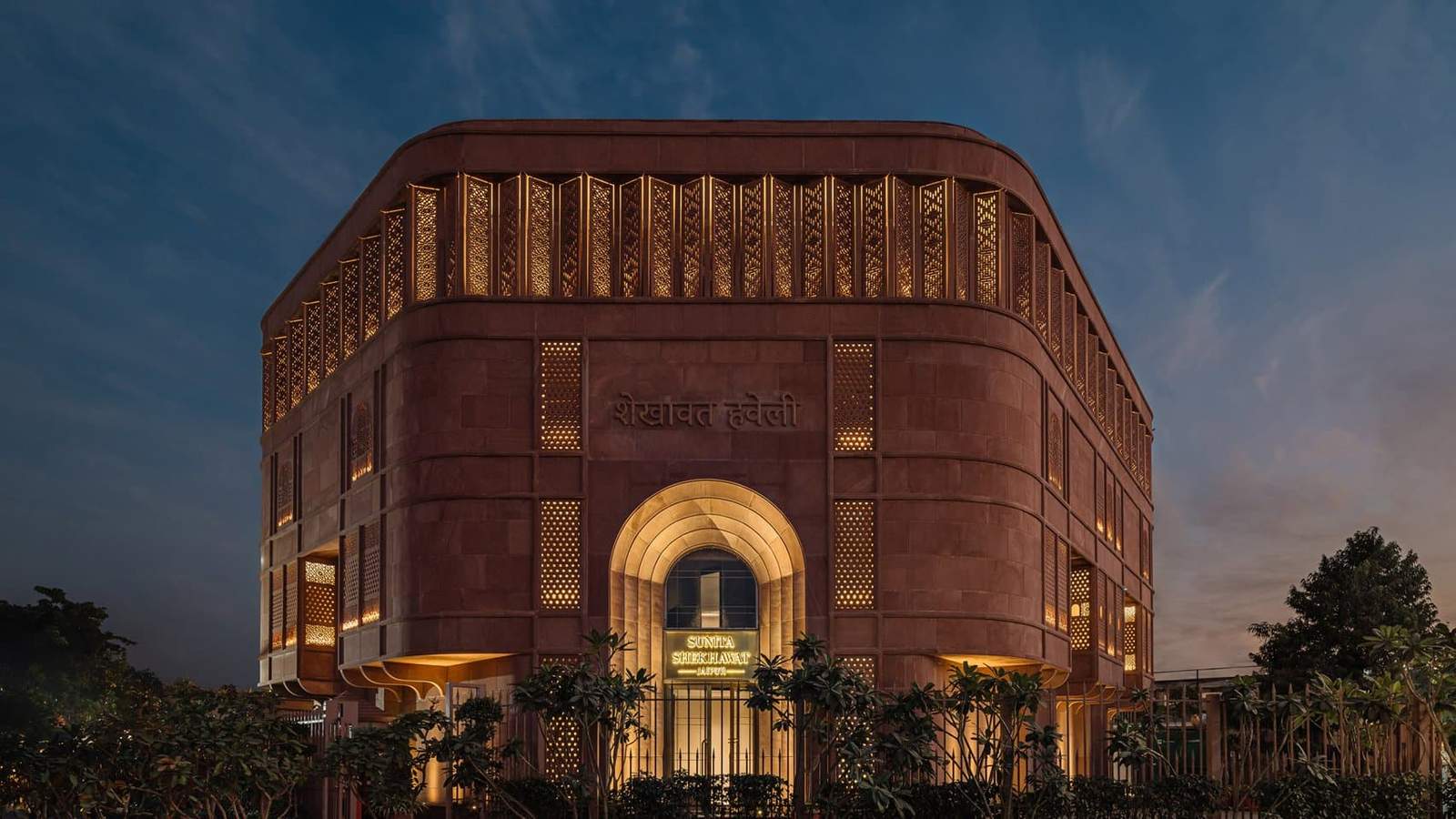Studio Lotus has transformed a partially completed building in Jaipur, India into a multi-functional space combining a museum dedicated to Meenakari craftsmanship and a flagship store for the Sunita Shekhawat jewellery brand. The design integrates historical influences with modern aesthetics, paying homage to regional architecture and the craft of Meenakari.
Design Philosophy
Studio Lotus aimed to create an environment where purchasing jewellery is not just a transaction but a “natural conclusion of a transformative experience.” This approach reflects the broader goal of honoring Jaipur’s rich heritage and establishing a new paradigm in luxury retail design.
Architectural Integration
The building features bevelled balconies and intricately layered patterns inspired by Rajputana, Mughal, and Art Deco styles. This design echoes the architectural diversity of Jaipur and Sunita Shekhawat’s approach to jewellery, blending tradition with contemporary aesthetics.
Museum of Meenakari Heritage
Located on the ground floor, the museum serves as a “storytelling space” for Meenakari craftsmanship. Developed in collaboration with Usha Balakrishnan and Siddhartha Das Studio, the museum offers a narrative gallery that opens up the world of enamelling to visitors. This space was initially intended for the store but was repurposed to create an immersive experience centered around the art of Meenakari.
Flagship Store Design
The jewellery store is situated on the lower ground floor, characterized by an off-white araish lime stucco gallery space. The design includes private pods for personalized client interactions, with semi-vaulted ceilings adorned with frescoes. These frescoes, created by CraftCanvas, depict regional architecture and natural motifs, adding a bespoke touch to the interiors.
Spatial Connectivity
A sculptural staircase connects all floors, leading to Shekhawat’s office and design studio on the first floor. The top floor, wrapped in glazing and shaded by stone lattices, is planned to house a restaurant and bar, offering panoramic views of the city.
Exterior and Materials
The building’s facade features Jodhpur red sandstone, hand-carved by local artisans, reflecting Shekhawat’s hometown and aligning with Jaipur’s characteristic pink architecture. This material choice underscores the project’s commitment to local craftsmanship and contextual relevance.
Key Features
- Design Approach: Blending historical influences with modern design to create a transformative retail and museum experience.
- Museum Space: Dedicated to the craft of Meenakari, offering an immersive narrative on the art of enamelling.
- Store Layout: Includes private pods with fresco-adorned ceilings for exclusive client interactions.
- Connectivity: Central sculptural staircase linking all floors, enhancing spatial flow.
- Material Palette: Jodhpur red sandstone and araish lime stucco, emphasizing local craftsmanship and architectural harmony.
Conclusion
Studio Lotus’s design for the Museum of Meenakari Heritage and Sunita Shekhawat flagship store stands as a testament to Jaipur’s architectural heritage and the intricate art of Meenakari. The project seamlessly integrates historical and contemporary elements, creating a space that elevates the jewellery buying experience to an immersive journey through local craftsmanship and architectural marvels.

Finally, find out more on ArchUp:







